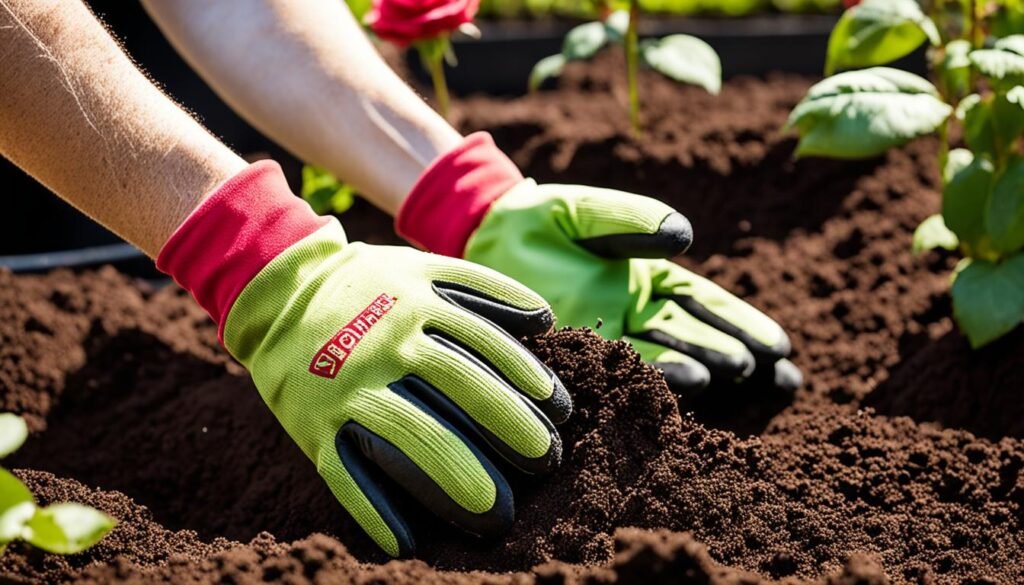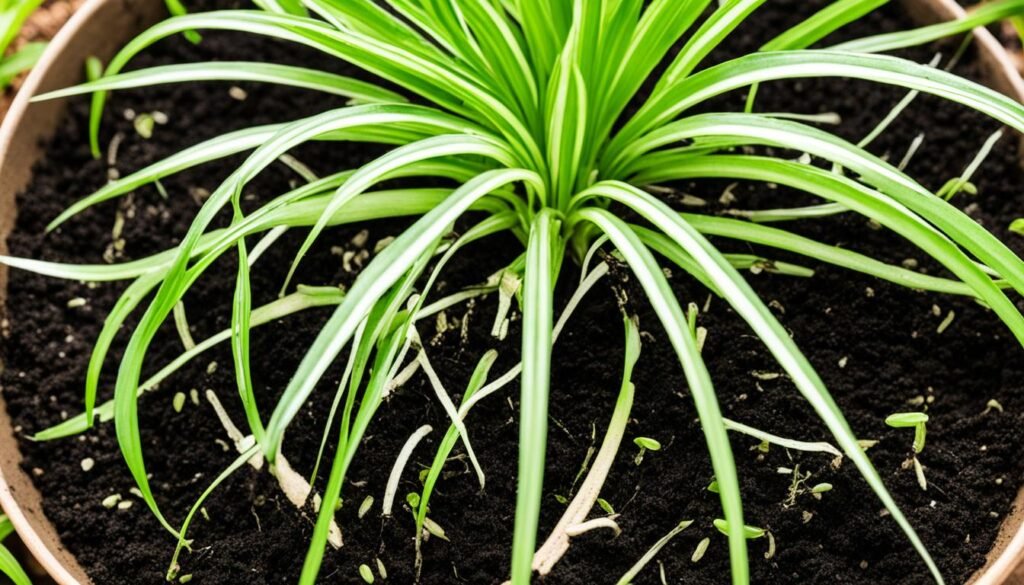Are you struggling to get your roses to thrive? The secret to a vibrant and flourishing rose garden lies in the soil. Providing your roses with the best soil is essential for their growth and health. But what is the best soil for roses, and how can you achieve it?
This article will guide you through the steps to create the perfect growing conditions for your roses. It will discuss the importance of soil pH, the role of proper drainage, and the suitable soil amendments. You will also discover the secrets of organic rose soil mix, top-rated rose plant soil, and more. Get ready to unlock the full potential of your rose garden and enjoy exquisite blooms that will leave everyone in awe.
Let’s dive into the fascinating world of rose gardening and explore the optimal soil conditions to make your roses flourish like never before!
The Importance of Soil pH for Roses
The success of rose cultivation depends heavily on the soil’s pH level. Roses thrive in soil that is close to neutral or slightly acidic. The soil pH directly affects the availability of essential nutrients to the roses, which is crucial for their growth and overall health.
It is important to perform a soil test to determine the pH level of your soil. This will provide valuable information about any potential pH imbalances and guide you in making the necessary adjustments. Soil test kits are readily available at garden centers and can help you accurately measure the pH of your soil.
If the pH of your soil falls outside the preferred range for roses, corrective measures must be taken. Acidic soil with a pH below 6.0 should be amended to raise the pH to the optimal range. On the other hand, alkaline soil with a pH above 7.0 should be amended to lower the pH.
Adjusting soil pH is an ongoing process, as factors like rainfall, leaching, and nutrient uptake by plants can influence the pH over time. Regular soil testing and adjustment will help maintain a favorable pH level for your roses.
Roses grown in highly acidic or alkaline soil may benefit from being grown in containers, where the soil can be more easily controlled. Container gardening allows for precise adjustment of soil pH to cater to the specific needs of the roses.
Soil Drainage for Healthy Roses
Proper soil drainage is essential for maintaining roses’ health and vitality. Roses require soil that drains well to prevent soggy conditions that can lead to root rot and other diseases. At the same time, the soil must retain enough moisture for the roots to absorb. Finding the right balance is crucial for roses’ successful growth.
Loam soil is ideal for roses as it provides a good drainage and moisture retention balance. It combines sand, silt, and clay, making it well-draining yet capable of retaining plant moisture. On the other hand, sandy soils drain too quickly, leaving the roots thirsty, while clay soils become waterlogged, suffocating the roots.
Preparing the planting site properly is important for creating well-draining soil for roses. Start by removing any large rocks or debris that may impede proper drainage. Avoid adding sand to clay soils, as this can create a dense, cement-like mixture that is difficult for water to penetrate. Instead, organic matter, such as compost, composted manure, or leaf mold, should be incorporated into the soil. These organic materials improve water retention and drainage, creating a healthy growing environment for roses.
Improving soil drainage is crucial for roses to thrive. By creating well-draining soil that retains adequate moisture, you can ensure your rose garden’s long-term health and beauty.
Soil Amendments and Fertilization for Roses
Roses thrive when grown in nutrient-rich soil supplemented with organic amendments. Soil amendments are crucial for roses’ healthy growth and can create an optimal growing environment.
Phosphorus should be added to the soil to promote strong root development. Organic sources of phosphorus, such as bonemeal, are readily available and effective. Phosphorus aids in establishing a robust root system, which is essential for the roses’ overall health and vigor.
Nitrogen is another essential nutrient for roses; organic matter usually provides sufficient nitrogen. Some gardeners supplement their diet with additional nitrogen from kelp or soy meal sources. These organic nitrogen sources can further enhance the growth and vitality of your roses.
Epsom salts are popular for adding sulfur and magnesium to the soil. These minerals benefit the roses’ overall health and contribute to vibrant blooms. Adding Epsom salts as a soil amendment can help ensure your roses receive the nutrients necessary to thrive.
Fertilizing your roses with mineral amendments and organic materials can create nutrient-rich soil that nourishes them. This approach eliminates the need for constant fertilization and provides a more stable and balanced growing environment for your plants.
Preparing the Soil for Rose Beds
Proper soil preparation is essential for creating a favorable environment for your rose beds. This section will discuss crucial soil preparation steps to ensure your roses thrive.
Before making any amendments, it is crucial to test the soil pH. This will help determine if any adjustments are needed. Roses prefer slightly acidic to neutral soil, with a pH range of 6.0 to 7.0.
If the soil lacks proper drainage, there are several methods you can use to improve it. One approach is to work in organic matter, such as compost, worm castings, or well-rotted manure. These additions will enrich the soil and promote better drainage.
An alternative solution is to add drainage channels, which can effectively redirect excess water away from the rose beds.
Organic matter plays a crucial role in preparing the soil for rose beds. Adding compost, worm castings, or well-rotted manure will enrich the soil with essential nutrients and improve its quality. Consider using blood and bone, which are known to be beneficial for roses.
Completing soil preparation at least a couple of months before planting is recommended. This allows the soil to settle and provides ample time for the amendments to integrate effectively.
Choosing the Right Location for Rose Beds
When it comes to creating beautiful rose beds, selecting the right location is paramount for the health and vitality of your roses. Several key factors should be considered during this decision-making process: sunlight, competition from nearby trees and shrubs, and access to water.
Sunlight: Roses are sun-loving plants requiring at least six hours of sunlight daily. To ensure optimal growth and blooming, place your rose beds in an area that receives abundant sunlight, preferably in the morning when the rays are gentle.
Competition: Rose beds should be located away from trees and large shrubs that may compete with the roses for vital resources such as nutrients, water, and sunlight. Tree roots can extend well beyond the tree canopy, so it’s essential to consider this potential competition when selecting the location of your rose beds.
Water Access: While roses need regular watering, it is crucial to avoid waterlogged soil as it can lead to root rot and other detrimental issues. The soil in your rose bed should have good drainage to prevent water from pooling around the roots. At the same time, ensure that your rose beds have access to water for irrigation, whether through a nearby water source or a well-designed watering system.
By carefully considering these factors, you can choose the perfect location for your rose beds and create an environment that promotes healthy growth, abundant blooms, and flourishing foliage.
Designing Rose Beds for Optimal Growth
Various factors must be considered when designing rose beds, such as the desired layout and available space. A popular design choice is a 5-foot wide strip, which can be curved or straight. This strip allows multiple roses to be planted in rows, maximizing space and providing a visually appealing arrangement.
One crucial aspect to remember when designing rose beds is the spacing between the roses. It is essential to leave enough space between each rose to avoid stepping on the soil and potentially damaging the delicate roots. This spacing also enables proper airflow and prevents overcrowding, which can lead to disease and pest issues.
Another consideration for optimal design is creating pathways within the rose bed. Pavers or stepping stones can be strategically placed to access different areas of the rose bed without compacting the soil. These pathways not only serve a functional purpose but also enhance the overall aesthetics of the rose bed.
Selecting the Right Roses for Your Rose Bed
When choosing roses for your rose bed, select varieties well-suited to your specific location and growing conditions. Consider the hardiness zone, plant size, and sunlight requirements to make the best choices for your rose garden.
One important factor to consider is the hardiness zone for roses. Different rose varieties have different tolerance levels to cold temperatures, so choosing roses suitable for your hardiness zone is essential. This will help ensure that your roses thrive and survive the winter months.
Another consideration is the size of the rose plants. Some roses grow tall and wide, while others are more compact and bushy. Consider the space in your rose bed and choose roses that fit well without overcrowding. This will ensure that each rose has enough space to grow and receive adequate sunlight.
Roses’ sunlight requirements should also be considered. Most roses prefer full sun, requiring at least six hours of direct sunlight daily. However, some rose varieties can tolerate partial shade or dappled sunlight. Consider the sunlight your rose bed receives daily and choose roses that thrive under those conditions.
High Country Roses is a reputable source for a wide selection of rose varieties suitable for rose beds. With over 600 own-root rose varieties available, they offer harder options and are less prone to issues associated with grafted-root roses. Browse their collection to find the perfect roses for your rose bed.
Preparing the Soil for Planting Roses
Preparing the soil before planting roses is essential to ensure optimal growth and health of the plants. One crucial step in soil preparation is adding organic matter, which improves the soil structure and provides vital nutrients for the roses.
To enhance the soil condition, it is recommended that 2 to 4 inches of organic matter, such as compost or aged manure, be added to the planting area. This can be done by evenly spreading the organic matter over the soil surface and gently incorporating it into the top few inches of the existing soil.
Adding organic matter enhances the soil’s ability to retain moisture, allowing the roots to absorb water and nutrients efficiently. Organic matter also promotes beneficial microbial activity in the soil, creating a healthy environment for the roses to thrive.

Once the organic matter is incorporated into the soil, it is advisable to rake the surface to create a smooth and level bed for planting. This ensures that the roses have proper contact with the soil, promoting establishment and growth.
Preparing the soil for planting roses may require some effort, but it is a crucial step that sets the foundation for successful rose cultivation. Taking the time to improve soil condition and provide adequate organic matter will ultimately result in healthier and more vibrant roses.
Planting and Caring for Roses
Proper planting and care are essential for the success of your roses. Start by digging a hole wide and deep enough to accommodate the rose plant’s expanding root system. Gently remove the rose from its container and place it in the hole, ensuring the bud union is leveling with or slightly above the soil surface. Fill the hole with soil, firming it gently around the plant.
Water the newly planted rose thoroughly, ensuring the soil is moist but not soggy. This will help the roots establish themselves. After planting, it’s important to harden the roses by gradually exposing them to sunlight and wind. Start by placing them in a shaded area for a few hours daily and gradually increase the exposure over a week or two. This will help prevent shock and promote healthy growth.
Mulching is another important step in caring for roses. Apply a layer of organic mulch, such as wood chips or shredded bark, around the base of the plant. Mulching helps conserve moisture in the soil, reduces weed growth, and regulates soil temperature. Avoid piling the mulch against the rose stems to prevent rot and disease.
Regular watering is crucial for the health and blooming of your roses. Water deeply, providing enough moisture to reach the root system. Avoid shallow watering, as it may encourage shallow root growth. Monitor the moisture level of the soil and adjust your watering frequency accordingly. Additionally, prune your roses regularly to promote air circulation and remove dead or diseased wood.
Author
-

Anne Williams is a passionate wordsmith, blending creativity with expertise in SEO to craft captivating content. With a penchant for concise yet compelling prose, she brings stories to life and leaves readers craving more. When she's not penning her next masterpiece, you can find her exploring new coffee shops or lost in the pages of a good book.
View all posts






